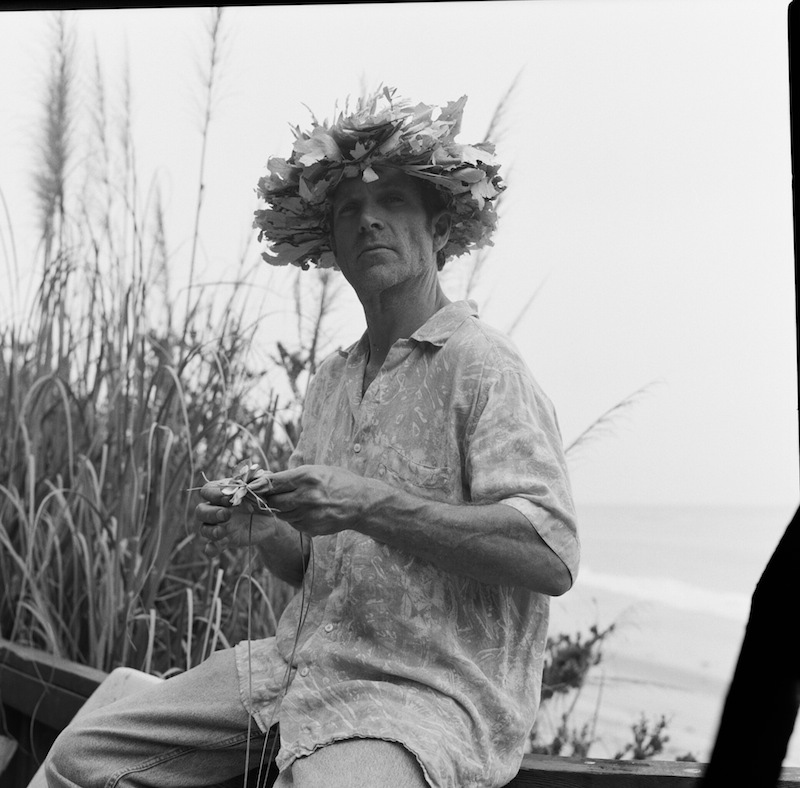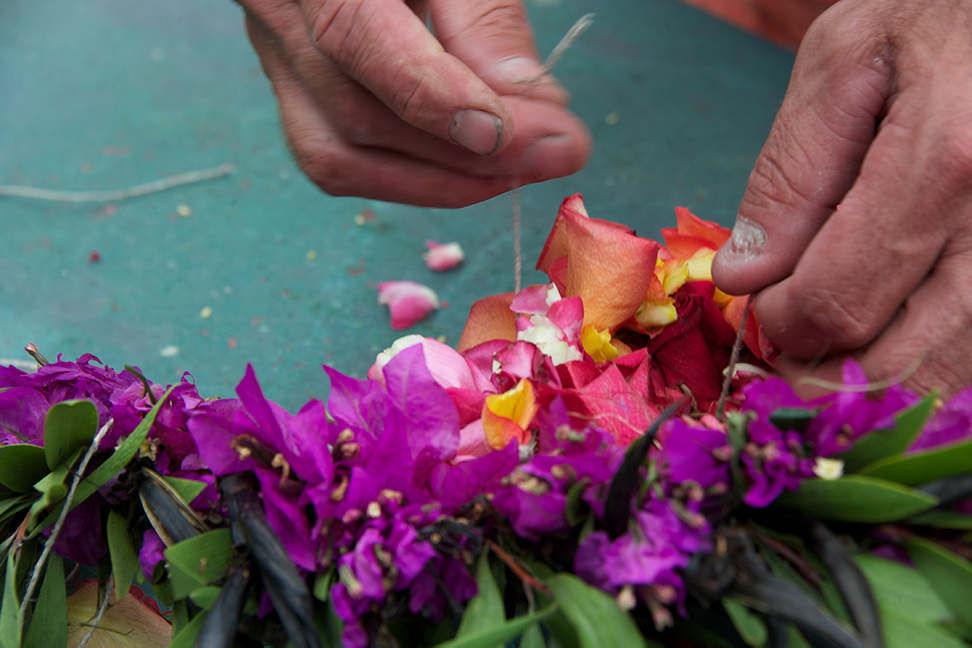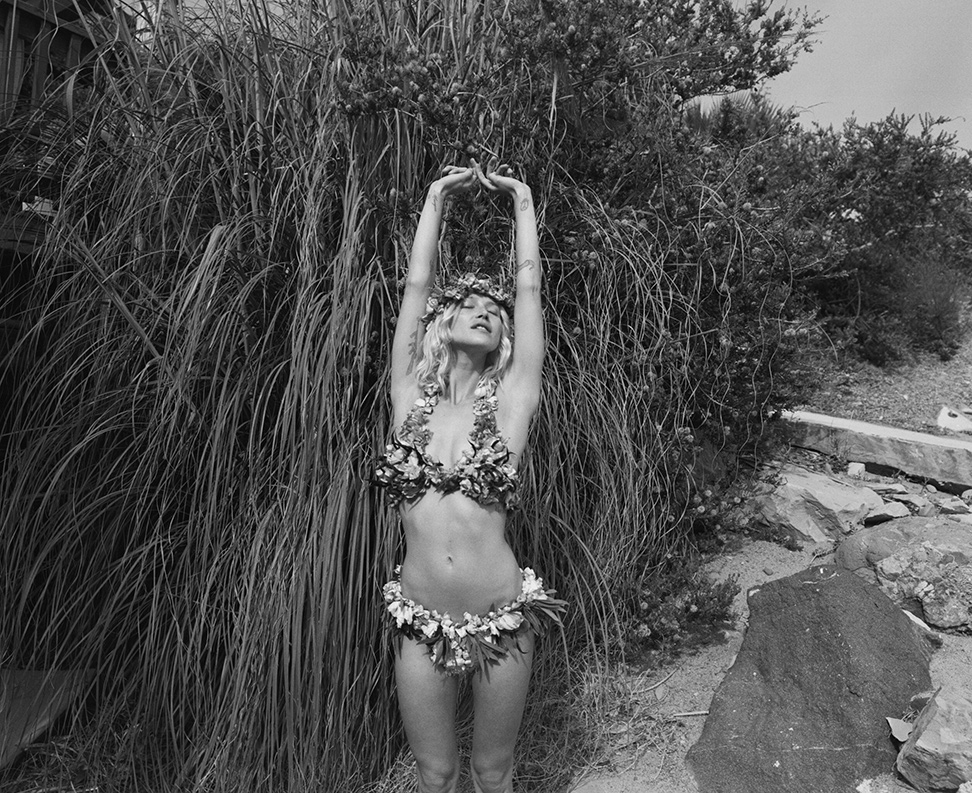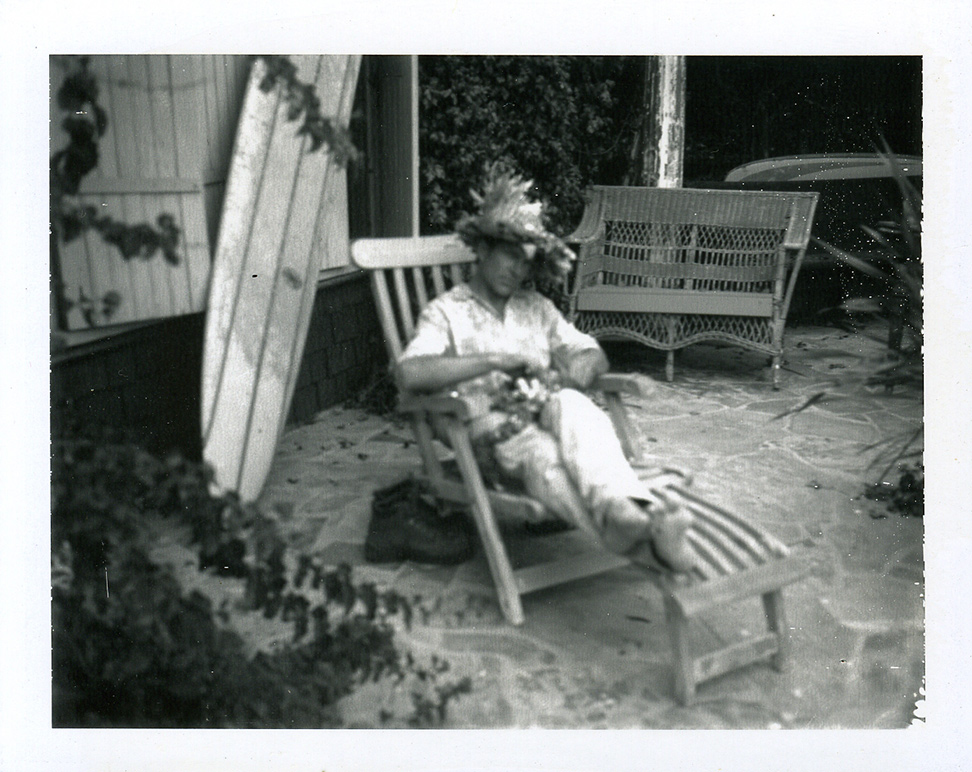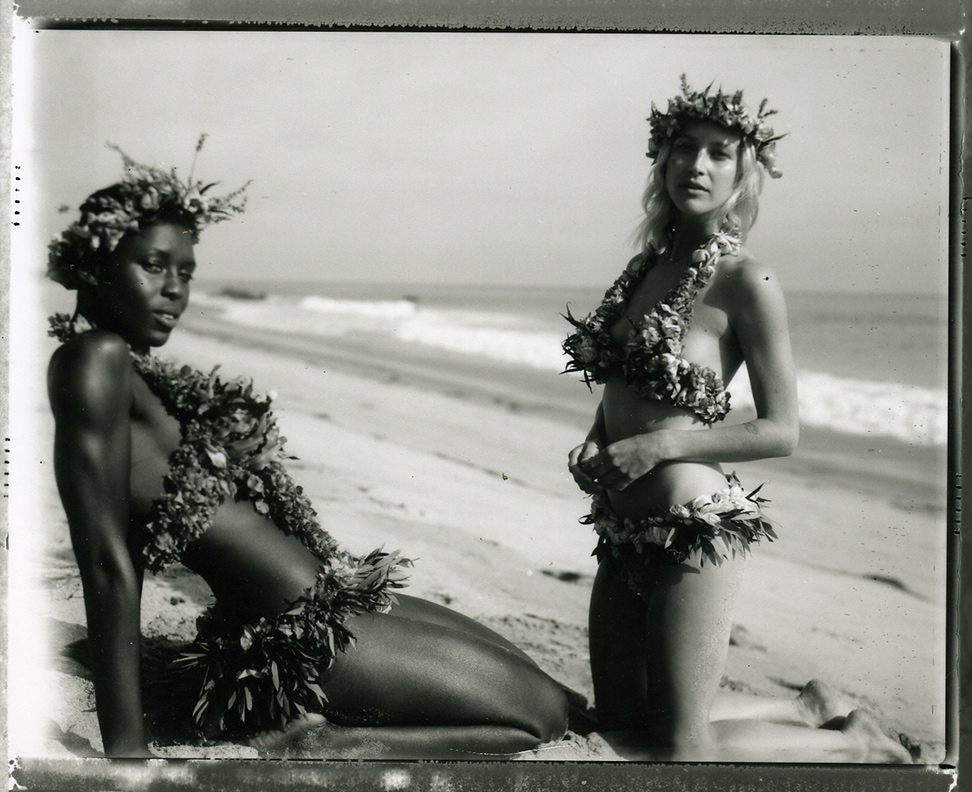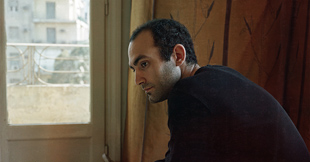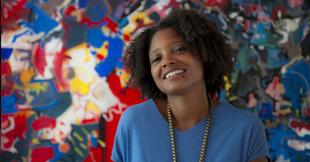
An interview by Cara Trump
Photographed by Melodie McDaniel
Models Lauren Hastings / Jodie Smith
When I was asked to interview “floral fashion designer” Theron Nelson, I immediately assumed it would be a puff piece. But what I discovered went well beyond a landscaper making bikinis out of flowers and surfing for fun, and I was swept up in the artistry. I found I had a myriad of questions about the flowers, the fashion and the photo shoots. Nelson is a lesson in judging a book by its cover.
I spoke with Nelson outside a cafe in Malibu. Right away, his eyes lit up as he offered photos of his work in the same way parents show off photos of their children, and I began to understand the man’s passion for his craft. He spoke excitedly of the characteristics of bougainvillea and straw flower, and took note of our surroundings, pointing out the different flowers and explaining how each would go with other plants and with which garment it would work best.
The Newport-born artist may appear to have floated through life – choosing a course of little responsibility and happening upon jobs and hobbies, all with a looming fear of failure. While this may have once been true, Nelson’s goals have evolved.
The grandson of a gem-cutter and the son of a jeweler/dentist, Nelson grew up constantly exposed to the creative process. “[My father] became very versed in making things out of gold and creating all kinds of jewelry,” Nelson remembered. His father often worked with the burgeoning artists’ colony of Laguna Beach. “He became the dentist to many, as he was into bartering and trading dental work for expensive art, from poetry and paintings to amazing sculptures out of metal,” he said, “He was a huge name in the world of art back in Laguna Canyon in the ‘60s, repairing the struggling artists’ teeth and [being] not only a dentist, but a fellow artist and friend.”
Striving for the approval of his father, a neglectful alcoholic, Nelson also learned how to make jewelry. “My father was not into family, and so I had to come up with my own art style,” he said. But when his parents divorced, Nelson was left without a father and blamed himself. “It’s hard to try and overcome the trauma of knowing your parent isn’t really there for you and never was.” Feeling lost and defeated, he left Newport Beach for Santa Cruz. “I thought if I came up with something new it might allow my mind to relax and forget the past,” he said, “I was looking for an art that captured my dad’s attention and a way to show him I was not just some dumb kid he didn’t want to know.” But it wasn’t until he stopped trying to please his father that Nelson finally found what he was looking for.
“It was a miracle to find some new friends in Santa Cruz…leaving the people of Newport Beach behind and putting it all behind me,” Nelson recalled. It was there he met Kayla, a girl from Monterey, who taught him how to braid
lavender, giving Nelson a new creative outlet and sparking his interest in plant weaving. “[She] told me about braiding lavender and how you could make little head garlands out of just lavender, then I started incorporating other flowers and plants, realizing that these flowers, plants and different leaves have different physical characteristics that could be utilized in garments.”
It wasn’t long before Nelson became interested in creating his own wearable arrangements. “A couple buddies of mine design bathing suits for women, and so I combined my gardening and landscaping with the idea that I could make something to wear out of it,” Nelson explained.
With little education and no background in fashion, he relied on creative instinct. “It took a while to get comfortable with tying things together to where they didn’t come apart,” Nelson recounted, “In other words, trial and error over the last ten years.” He scoured fashion magazines for design ideas and created patterns based on how the garments were structured. “I’ll see a photograph in a magazine, and I’ll make a mental note or try to copy that outline, and then I’ll draw my own version of it,” he elaborated, “I’ll do a three-sided drawing – front, side and back, and once I get acquainted with the actual layout, then I will braid the flowers and create the piece based on the drawing.”
But, although he has found something he clearly loves, there is still a little self-doubt when he speaks of the future of his hobby-turned-prospective-business. “I’m just a little reluctant to overburden myself,” he admitted, “I didn’t want to get too carried away, because it was a pipe dream, initially, that I would become this fashion designer who worked with flowers and plants. And then if you have all these expectations and those aren’t met, then that can be a real bummer and a disaster. As an artist, I don’t want to burn out and not enjoy the hobby.” But, as he continued, he made it clear that it was more about maintaining the quality of his art. “You have to make the things with integrity. They have to be built to last, and that takes time and energy,” he asserted, “You can’t just rush through stuff.”
So, what does the future hold for the trepidatious artist? His goals are modest. He hopes to create pieces for dancers, hula competition participants and possibly small weddings. While he would prefer to make everything himself, he seems open to the idea of overseeing a small team. But, in the end, he’s just grateful to have found a creative outlet that he can merge with his source of income. “I, being a landscaper, saw the benefits of having a job out in the world where I could actually collect some plant materials from my daily work and enjoy the exercise that my work provided,” he said, “It’s a simple life, yes, and that’s pretty much all I ever wanted.”
